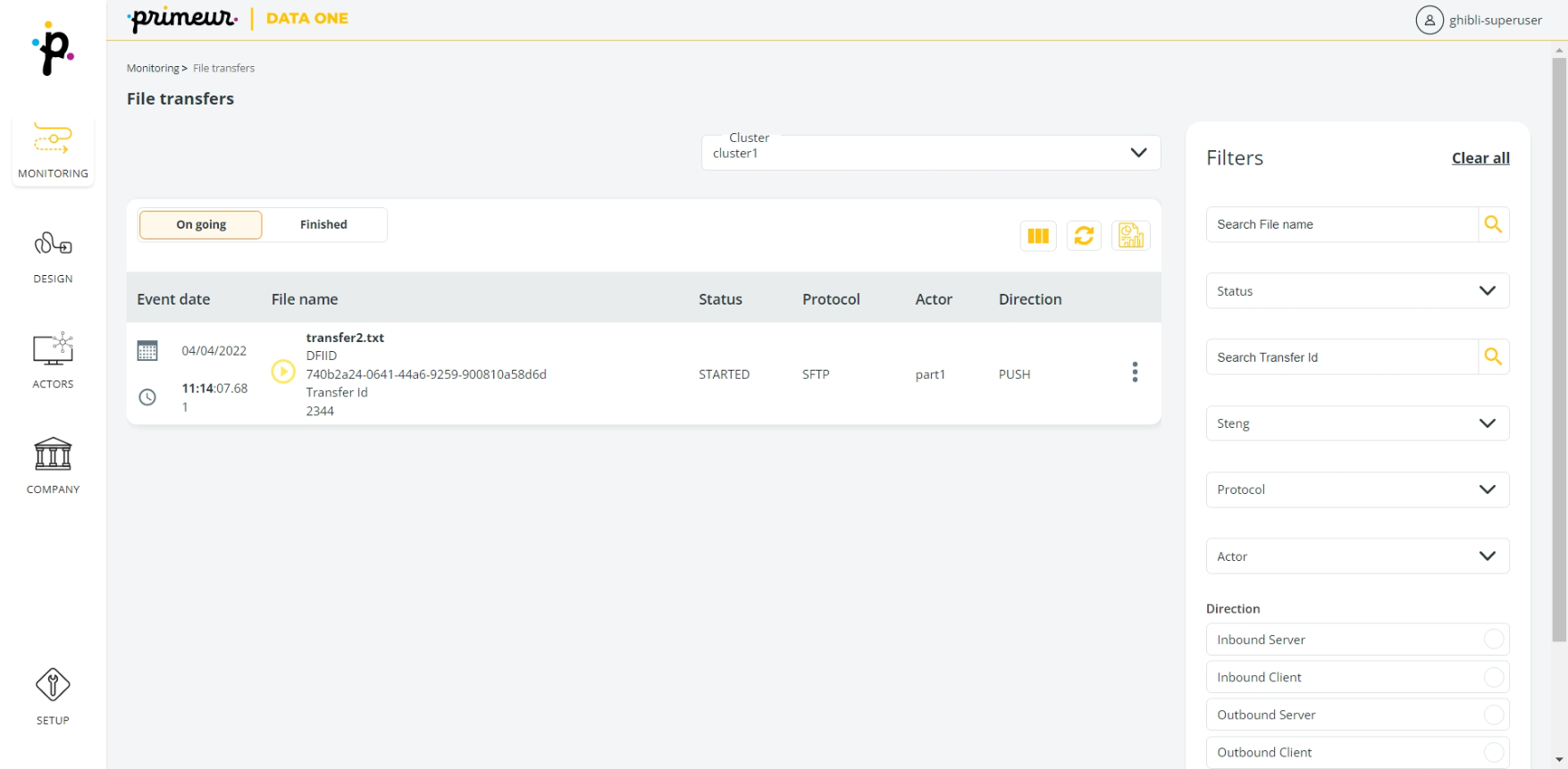Ongoing
The Monitoring → File Transfers section displays all transports currently running.

The list of results can contain hundreds or even thousands of files. You can use the Filters panel on the right to narrow down your search.
- Are you looking for files having specific names? Use the Search File Name field! This edit box is case sensitive! Enter the full or partial filename and press the Enter key on your keyboard to run your search without specifying further criteria.
- Are you interested in files having a particular status? You can select one or multiple statuses in the Status drop-down list.
- You have the Transfer ID of a file and want to filter by it? Use the Search Transfer Id field.
- Are you looking for files on a specific Steng or protocol? Or for an actor in particular? Use the relevant fields.
Moreover, you can filter transfers by direction and list only Inbound Client, only Inbound Server, only Outbound Client or only Outbound Server.
Inbound and Outbound show the direction of the transfer with respect to Data One:
- Inbound: Data One gets the files
- Outbound: Data One sends the files
Client and Server show the role Data One plays when transferring files:
- Client: Data One is active and connects to a system
- Server: Data One is passive and receives connections from another client
For example, filtering by Inbound Client, all transfers where Data One connects to a system to get some files will be listed.
You can also select multiple options, e.g. files with a specific name, status and protocol.
When done, click the Apply button to run your search.
An ongoing transport can be stopped temporarily - for example because you need to recover it at a later moment - or deleted. To execute one of these two options, click the ![]() icon and select Suspend or Abort according to your needs.
icon and select Suspend or Abort according to your needs.
To access the Report section, you can click on the ![]() icon.
icon.
Learn how to use the other options on the toolbar at the top of the page here.
Updated over 1 year ago
